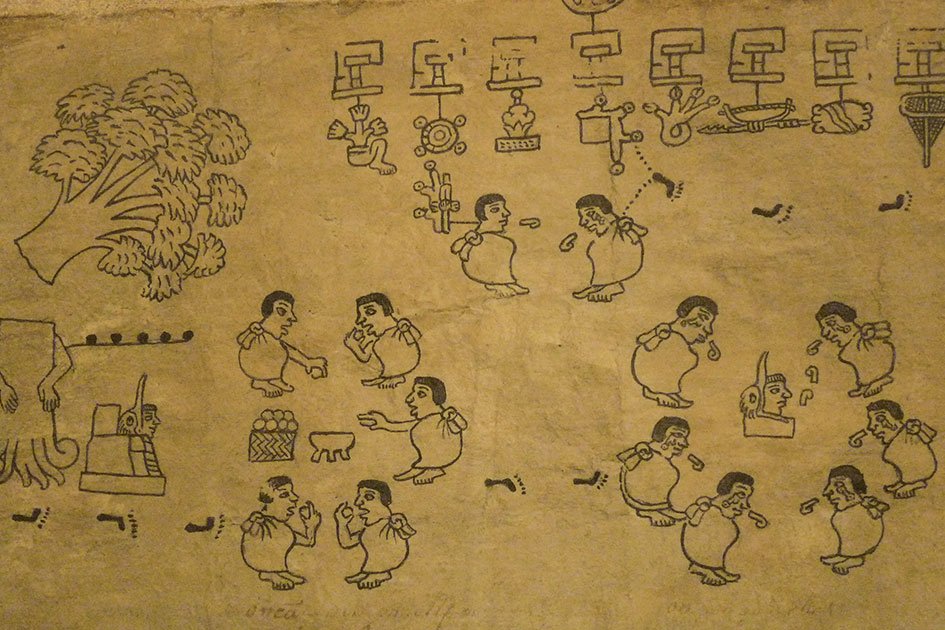Migration Story
Aztec codex provides clues to the origins of Tenochtitlan.
Follow the footprints across this Aztec codex, and you’ll encounter a place with no name, where a tree, encircled by human arms, is toppling over. What is the significance of this sign and how do we read the event recounted here?
For the first time in Reed’s history, students in Humanities 110 are studying texts from the Americas. A module on Mexico City began in January with a lecture by Prof. Nathalia King [English 1987–] on an Aztec text known as the Tira de la Peregrinación. This document, composed ca. 1530 on a long strip of bark paper, tells the origin story of the Mexica people: a two-hundred-year migration from Aztlán to an island on Lake Texcoco in the Valley of Mexico, where they would build the extraordinary city of Tenochtitlan. The city would become one of the largest in the world, remarkable for its beauty and feats of engineering.
The Nahuatl writing system uses four different types of signs and students study the varying deployment of these in Mexica imperial stories. In this detail, we can see examples of hiero- (or sound) glyphs, icons, and pictographs. The footprints might represent the Mexica people’s movement across space (and elsewhere in the codex, when used with a calendrical glyph, across time). Simple lines tether people and places to identifying hieroglyphs, in which a symbol stands for a syllable in a word. A small scroll next to a person’s mouth indicates speech. And the god Huitzilopochtli is represented by the hummingbird/human head atop a temple.
Tags: Academics, Courses We’d Love To Take, Diversity/Equity/Inclusion, Object of Study
